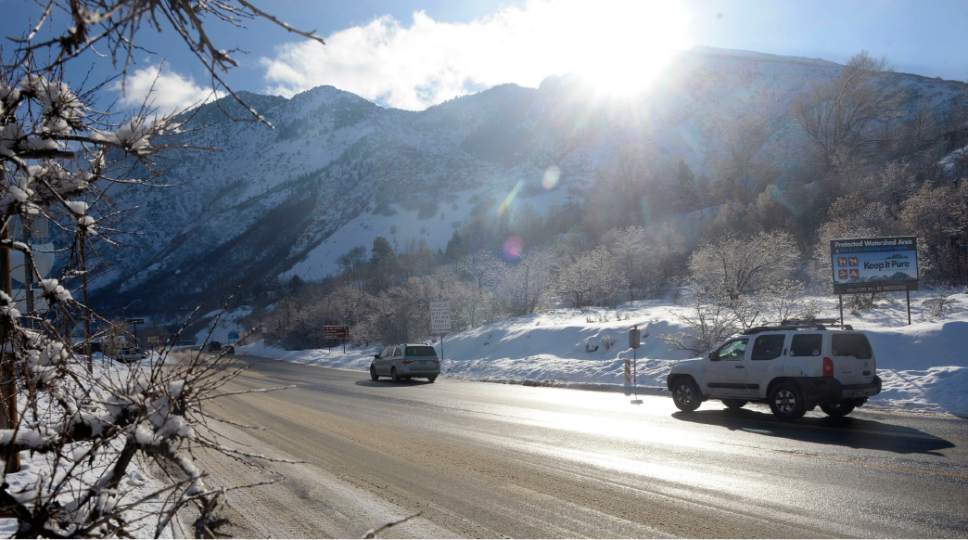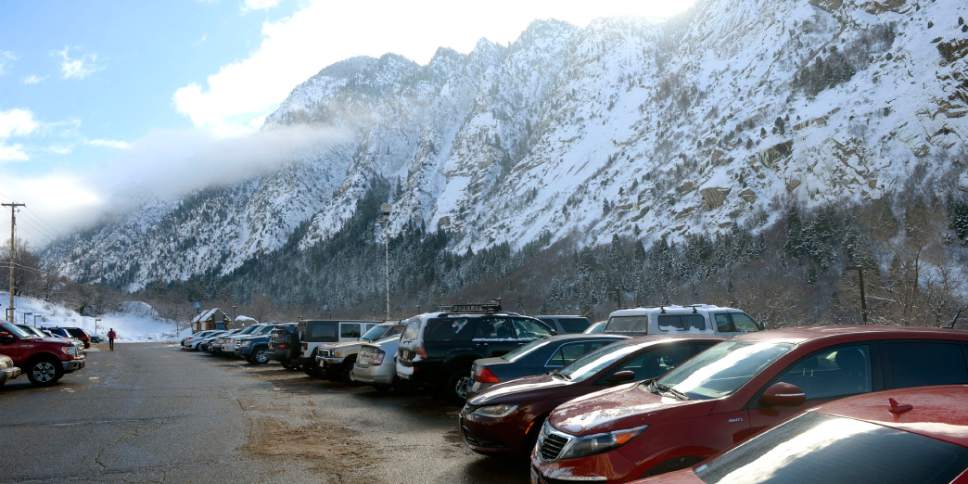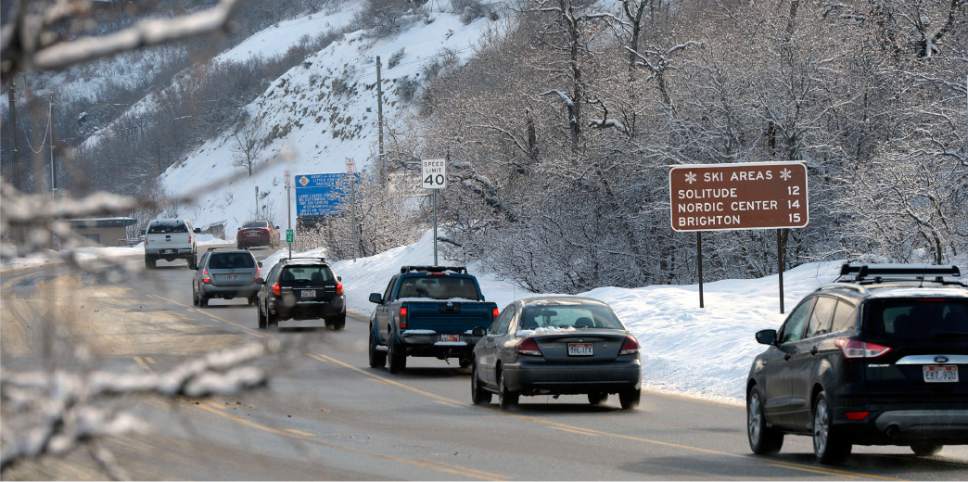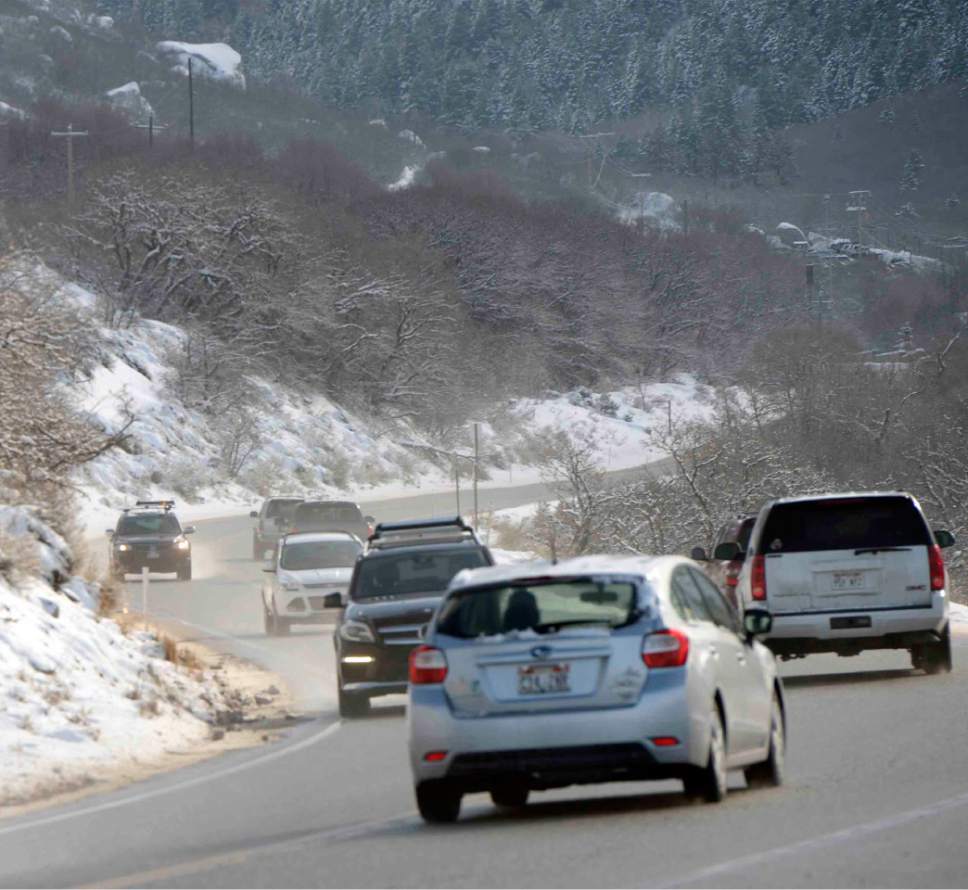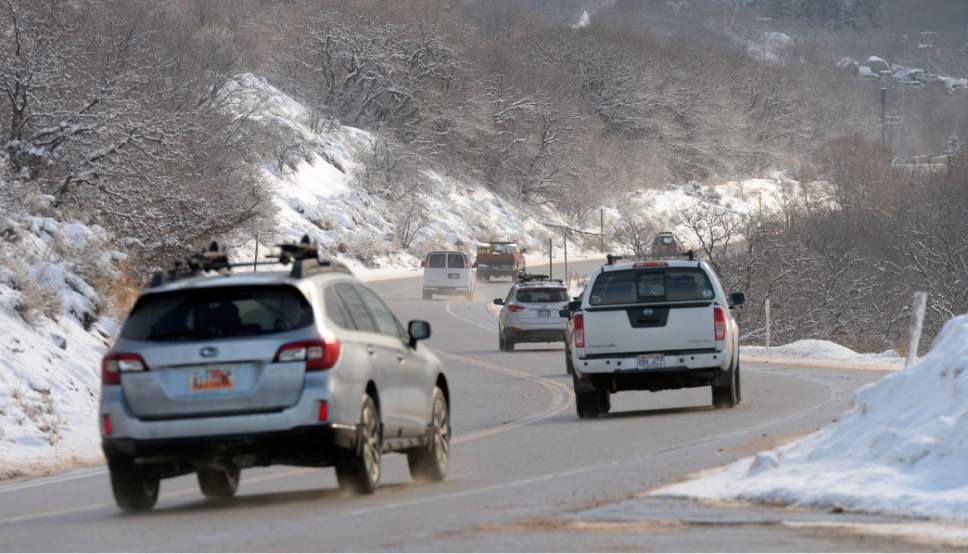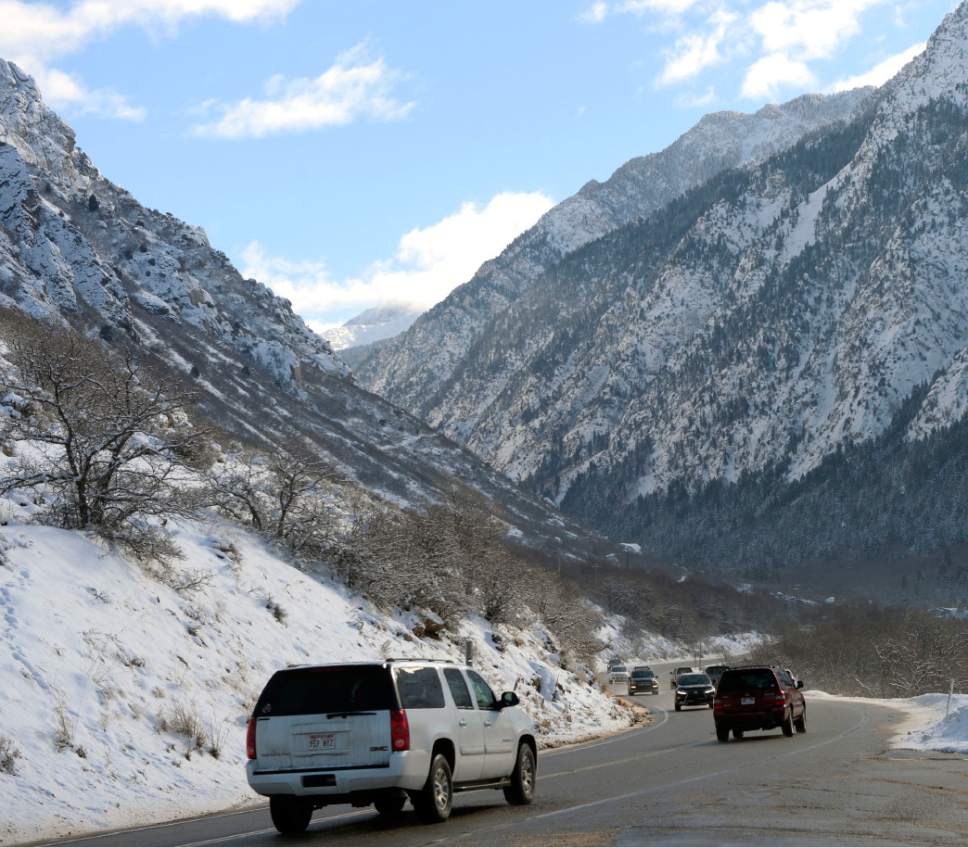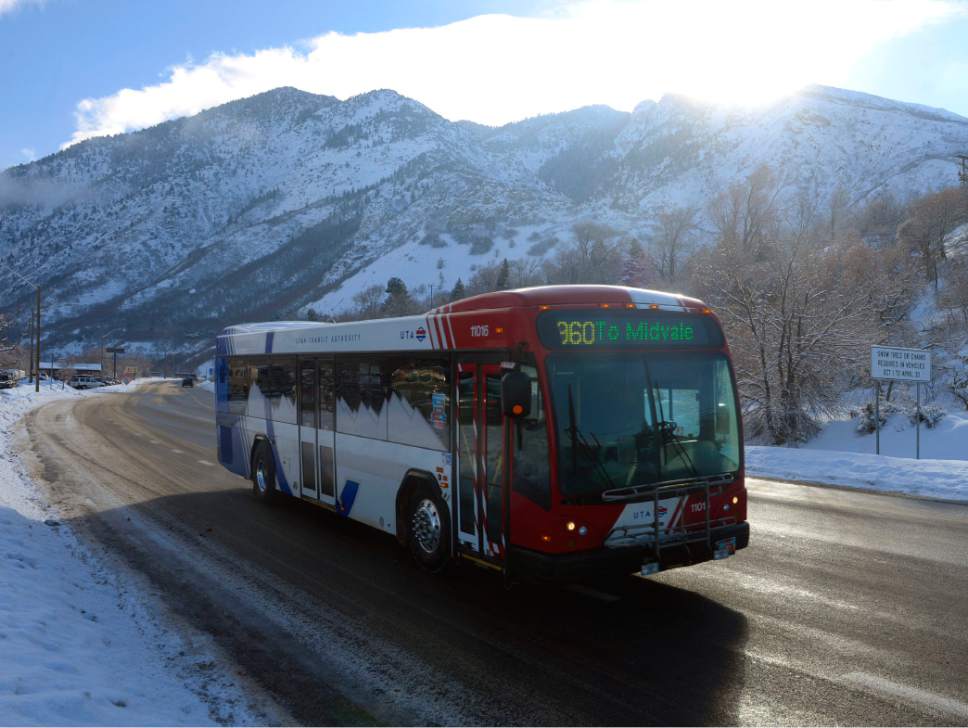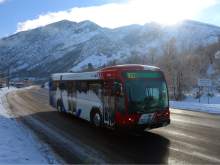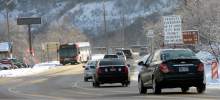This is an archived article that was published on sltrib.com in 2016, and information in the article may be outdated. It is provided only for personal research purposes and may not be reprinted.
Just getting to the Mountain Accord news conference Friday morning at the mouth of Little Cottonwood Canyon was a chore as bumper-to-bumper traffic inched toward Alta and Snowbird.
That was on purpose.
"This [snowy winter] season accentuates that we really need to do something about transportation and the canyons," said Alta Mayor Tom Pollard, a member of the Mountain Accord executive committee as he watched from a nearly full UTA park-and-ride lot while the "red snake" of vehicle taillights crept up Little Cottonwood.
The overnight delivery of 13 inches of light powder swelled the ranks of people driving to the canyons. Around 9 a.m., it took 17 minutes to go a couple of miles on Wasatch Boulevard from Bengal Boulevard to the canyon mouth.
That's slow. But there have been plenty of slower days, such as the previous Saturday when superlative snow conditions also contributed to drives up and down the canyon lasting two to three hours.
Traffic jams are no longer isolated to powder days, Pollard added.
"It's becoming 50 to 100 times a year, summer and winter," he said. "It's not just an inconvenience, but a public-safety issue. That's one of our major concerns."
Pollard joined Mountain Accord coordinator Laynee Jones and representatives of the U.S. Forest Service, ski resorts and Save Our Canyons on Friday to draw attention to the planning effort's goal to find immediate and short-term solutions to canyon-transportation problems.
"Get people out of cars and onto transit," is Jones' mantra.
It's not clear yet how that will happen, but the Mountain Accord process is designed to pull together interested parties, develop a consensus on what might work and look for the funds to do it.
"We don't want any ideas left off the table," said Dave Whittekiend, supervisor of the Uinta-Wasatch-Cache National Forest, which manages most of the land in the Cottonwood canyons.
Besides fears of avalanches sweeping away vehicles stuck in slide zones by traffic jams, Forest Service officials worry about "the visitor experience as well," he added. "We don't want a visitor's last impression [of skiing the Cottonwood canyons] to be a very slow drive out of the canyon."
To Dave Fields, Snowbird's vice president of operations, "the easiest way to eliminate congestion in the canyon is to get single-occupancy vehicles off the road."
That's easier said than done, especially since one of the beauties of Salt Lake skiing is that it's so easy to hop into a car and drive to a resort in relatively no time.
But something must be done, said Ski Utah President Nathan Rafferty, otherwise "I'm afraid we'll lose people from our sport because they can't get there to do it. There's not a capacity problem at the resorts. It's the roads."
Save Our Canyons Executive Director Carl Fisher said carpooling would help relieve some of the congestion.
But to come up with a sustainable plan for canyon transportation, he believes the emphasis needs to be on developing transit systems that can move people to the resorts from multiple places in the Salt Lake Valley.
"It's less an issue about what you do up and down the canyon but what happens in the valley," he said. "How do you get people from their homes and hotels to the resorts without getting into their vehicles?"
While expanded UTA bus service certainly would help, the Mountain Accord participants agreed the public has to buy into and support carpooling or mass transit.
"There is no easy answer, no one thing that can change this," Pollard said. But he believes the Mountain Accord process is at least providing the "energy to do some stuff."
Triple digit base
The base at Alta Ski Area reached 100 inches Friday morning, a milestone the Little Cottonwood Canyon resort never quite got to in the wimpy winter of 2014-15.
Last winter was a rarity, however, and the overnight storm that dropped 13 inches of snow in the top of the canyon made sure the century mark fell early this year.



